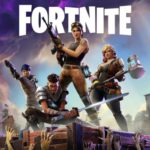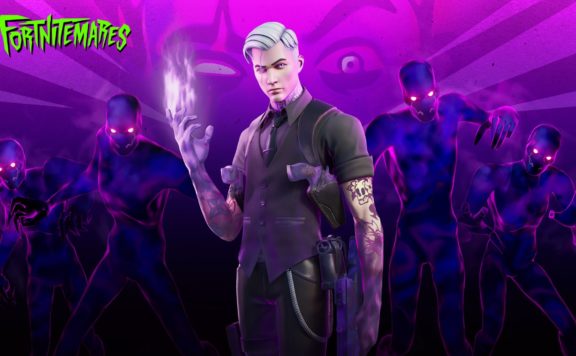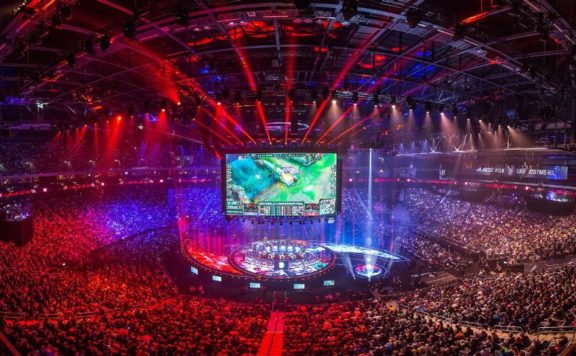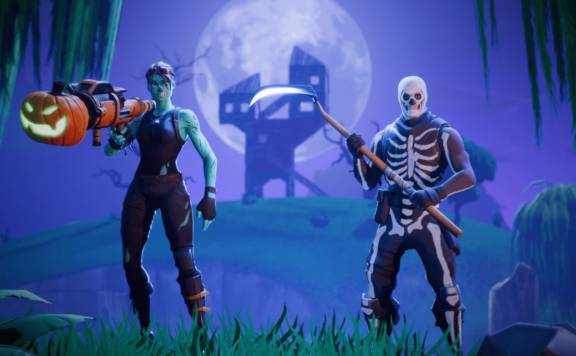Did you ever wonder how something like cross-game use of in-game purchases would work? For example, being able to use Fortnite skins in Call Of Duty? It all starts with a technology called “NFTs”.
Nick Donarski is the CEO of ORE Systems. Nick is an NFT and Cybersecurity Expert. Nick and his team at ORE Sys, LLC, developed a revolutionary and proprietary software that dramatically reduces the time, cost, and experience a game developer needs to integrate “blockchain” technology into their games. With their software, platform, and eco-system, the gaming community can participate in NFT ownership — meaning gamers will now truly own the gear, and developers will truly own the game.
We had a chance to chat with Nick about his team’s solution and the NFT business as a whole.
Gamespace: Nick let’s start with the basics. Can you give our readers a general understanding of what the “NFT” and “blockchain” technologies are?
Nick Donarski: Sure, Blockchain is simply a new type of computer network. The blockchain maintains all of the data based on a timestamp and a calculated value known as hashing to maintain the trust of data and is then distributed to all of the systems that make up the chain. This allows for data to exist autonomously and be available to anyone on the network. NFTs are simply a package of data placed on the blockchain. NFTs historically were used only for art or viewing purposes, the future is using NFTs as something more than just art.
GS: Are NFTs in the same technology space as say bitcoin and cryptocurrency? Meaning are they similar in concept or completely different and why?
Nick: Exactly the same, just a different representation, in most cases at least. In a lot of cases, NFTs are used to represent or build financial gains. These types of items are currently noted as Securities based on the SEC’s definition. So there has to be a personal understanding of those impacts when talking about cryptocurrency and classic NFTs. ORE System changes that though, we provide a direct utility for NFTs. Users, Gamers, Creators, all use the technology to dictate the content, but the community determines the value. This shift and application redefine what most know as an “NFT” today.
GS: When we talk about the “true value” of skins, in-game items, and NFT rewards, etc. are we talking strictly about a monetary value, or are there other factors and characteristics related to “true value”?
Nick: So, gamers “vote” with their wallets all the time in video games, if a particular skin sells extremely often in say Fortnite the community has said that item is valuable. The same goes for NFTs and the ORE System, the difference is that if a gamer finds that the in-game item really isn’t as good as they expected, they can auction or trade it within the eco-system. This breaks the cycle of wasted value. NFTs in the ORE System are made so that the community can directly vote with where they use ORE Tokens, on what items, games, movies, music, etc. The community has the power of ownership and that is a power that is usually reserved for the big game studios.
GS: Is cross-game use of in-game purchases limited to the games owned by one company or does the technology support cross-companies as well?
Nick: The ORE System supports ANY NFT created within the ecosystem. That means that should a larger brand, say a NIKE, leverage the system then developers would be able to integrate the shared item within any of their games and promote the integration as part of the marketing for the game. Gamers would then be able to take the NFT item into ANY game that has it available. If we go back to the NIKE shoe idea, gamers can then use the item in any game using ORE SDK and being supported by the developer. On the flip side, a developer does not need to use the shared items and can create single game-integrated items as well. The beauty is that the developers have the choice of how, what, and where to integrate the NFTs.
GS: One of the problems with dealing with digital assets across games and even game companies has to do with determining the true value of skins, in-game items, and NFT rewards. You and your team believe they have a solution to this roadblock, care to elaborate?
Nick: We do, the ORE System allows for the game developers to still define the revenue system that works best for them. If they only want to sell the items in their games and have a specific play-to-earn or whatever mechanics they choose the power is theirs to define that. We provide the platform, underlying technology, and support to help them do this in the most efficient, cost-effective, and fastest way possible. ORE System gives the developers the opportunity to define their base value (sell) or allow the community to vote (auction) on the items. The community then decides if the NFT is worth it for the game and for themselves. So we see our technology as the vehicle to provide the toolbox to do this, but still, give the power to the developers to individually determine the value and the gamer the ability to say if they feel the same value really is applicable. That is the beauty of decentralized gaming.

GS: Is the technology limited to setting an initial “true value” of an item or does it allow for an item to become a “collector’s item” and the value increasing or decreasing?
Nick: The developer can define either an initial price or just place it up for auction. All of the items can then vary in price by the second, third, fourth, etcetera transactions. Each of the subsequent trades/sales/auctions allows the community to determine the value.
GS: Can an NFT/game item ever truly become “lost”? Is it a matter of where it’s backed up on a company server, etc. or is there more to it?
Nick: So NFTs themselves are always locked to one wallet/user at all times. If the user loses the wallet or forgets their password, access to that version of the NFT is gone forever. But, on the backend, the NFTs are used for Digital Rights Management (DRM) or licensing use so the developer has the representation of the game version of the NFT within their code.
GS: Do you sense gaming companies might try charging to use a skin, etc. from their game in another game from a different company?
Nick: As a gamer, I know that it is something that I would love to be able to do, and most of the gamers we talk to think the idea is awesome. But the big AAA studios have made a lot of money locking their items into each of their games. If you have to buy a skin in every version of the game for every character there is a lot of money to be made. We simply think of gaming in a different way. We want to show that you can still generate a great revenue stream for the developer while supporting the decentralized world of blockchain. So, I don’t know if say Call Of Duty will allow for Fortnite skins in the future, but I will tell you that if we make a big enough wave and show performance growth, they will look at what we are doing.
GS: Your software is supposed to provide developer royalty protections and prevent piracy which I’m sure are big concerns. Can you go into some detail about how your solution does this?
Nick: The royalties applied to NFTs are set from the time of creation to the time of the destruction of the item or death of the blockchain. Developers, musicians, moviemakers can all distribute their content without the requirement of big studios. The utility NFTs that make up the ORE System allows for not only the NFT picture, but we integrate a proprietary data storage and streaming functionality. When a Developer distributes their game within the ORE System and the ORE Stealth client each game or music track or movie requires the purchase of an NFT from the ORE Forge (our NFT marketplace) to own a license of the content. In the history of content distributors, they were at the mercy of the production studios and only received royalties on the first transaction. Leveraging NFTs only the person that owns the NFT can access the content and every time the item changes hands the original owner is paid their royalties. This removes the lost revenue of the secondary sales market and gives the creator the power to define that number that works best for them.
GS: You’re personally striving for gamers truly owning the gear while developers truly own the game. What happens to a gamer’s “gear” if the associated game is shut down for instance?
Nick: The NFT will always exist. That is the beauty of using the technology. Even in the event a game is shut down or killed off, the gamer still owns that item. There then becomes a “collector” aspect to it. Rarity is important in the value determination of NFTs. Similar to owning an original comic book or an original NES Mario Bros. game cartridge, there is a collectors market for these items. With the gamer owning the NFT item they can either continue to hold the item for future potential or sell it on the ORE Forge for another collector.
GS: Can NFT items be handled much like physical retail assets? For example, can gamers request a refund, exchange, etc. seeing how some of the identification involved are randomly generated and keyed to an individual?
Nick: Yes and no, the thing about blockchain is that once a transaction is performed (in most cases) the transaction can’t be reversed. But, there are a number of stages and validation for the process to be successful. A developer or content creator can then manage how they want to dictate their customer interactions and experience, if they support a return/exchange policy they own the ability to do so. For ORE Sys LLC we maintain and manage the underlying technology to support all users, but those determinations are left to the discretion of the developer or content owner.
GS: Your software dramatically reduces the time, cost, and experience a game developer needs to integrate blockchain technology into their games. What level of experience does said game developer minimally need?
Nick: The ORE SDK is developed in C# and C++. A developer should have a minimal understanding of the language they choose to own, but we are also creating integrable packages for the most used game engines such as Unity, Unreal, Stride, and Godot. This provides developers that are familiar with their chosen engine the opportunity to select the version that is the most comfortable for them.
GS: Do both gaming companies involved in say a cross-game promotion need to own your solution?
Nick: They need to either integrate and make the code for themselves to integrate their own custom version of the ORE SDK or use the ORE SDK to use cross-game items. The eco-system is made to work seamlessly with each other, but if a development studio wants to create their own version we offer support and services to help them with that process too. We support ALL blockchain developers and want to create a truly inclusive community.
GS: Do you see other applications outside of gaming for your software solution?
Nick: That’s the beauty of the ORE SDK, we focus a lot on gaming because I am a gamer at heart. But, the ORE SDK can support any application, game, mobile app, or other programs that want to integrate blockchain and NFTs. We don’t limit, hinder, or handcuff developers we support dreamers.
GS: In closing, where do you envision this NFT technology going in the future?
Nick: NFTs will become more and more mainstream. The more users and the easier it is to understand and acquire NFTs will only accelerate this process. Gaming is a natural place to use these technologies because gamers already perform the same actions without them, ORE System is looking to the future and making the adoption and use happen. With the growth of metaverse and the more “personal” our virtual selves become, the more people will want to own their image. NFTs are natural for performing and managing these types of things and will continue to grow in the future. There is no doubt in my mind about that. In many cases, these technologies were out of reach for indie or small developers and creators because of the cost or resources required. ORE System likes to say we are “white-collar technology, for blue-collar folks” and we will always be that.
For more resources check out:
Twitter Pauly Shore Video
YouTube ORE System Video
ORE System Social Media:
Twitter
Facebook
Telegram
PooCoin
Website
About Nicholas Donarski (Founder / Managing Partner of ORE System)
 Nick Donarski is the technical expert behind ORE Sys, LLC, and the inventor of the multi-part ecosystem that is the ORE System comprised of the ORE Token, the ORE Forge, and the ORE SDK. Holding multiple certifications including MCSE+S, MCSA+S, MCSE, MCSA, MCP, and CEH, Nick is a cyber security expert and has been a featured speaker at multiple cybersecurity conferences and worked for some of the biggest names in the industry. He is fluent in numerous programming languages and blockchain technologies including Web3, Ethereum, Polygon, Binance, BSC, and Smart Contract Security and Testing.
Nick Donarski is the technical expert behind ORE Sys, LLC, and the inventor of the multi-part ecosystem that is the ORE System comprised of the ORE Token, the ORE Forge, and the ORE SDK. Holding multiple certifications including MCSE+S, MCSA+S, MCSE, MCSA, MCP, and CEH, Nick is a cyber security expert and has been a featured speaker at multiple cybersecurity conferences and worked for some of the biggest names in the industry. He is fluent in numerous programming languages and blockchain technologies including Web3, Ethereum, Polygon, Binance, BSC, and Smart Contract Security and Testing.
Nick is a “gamer” at heart with a passion to create games for users and help developers realize their dreams. The suite of tools within the ORE Ecosystem is the means to that end.









